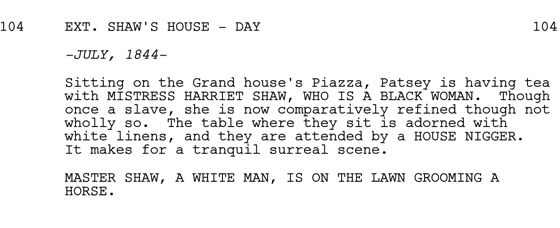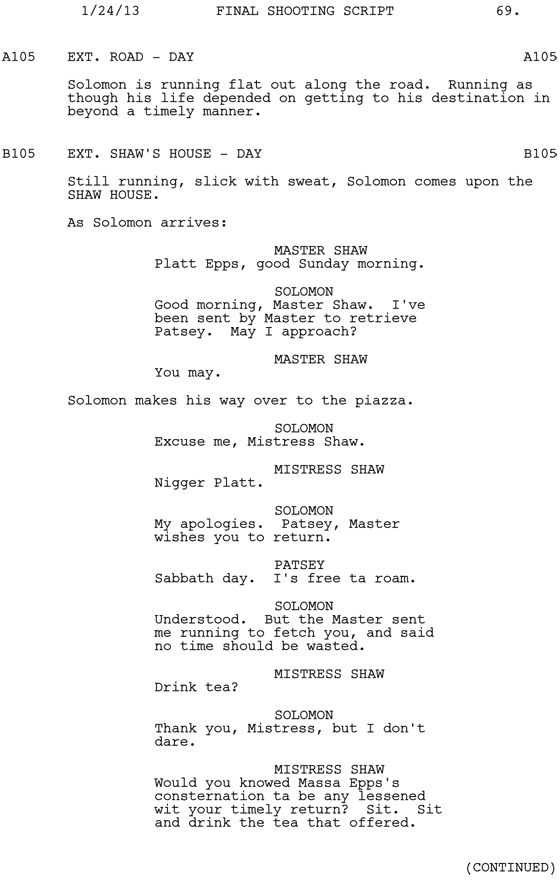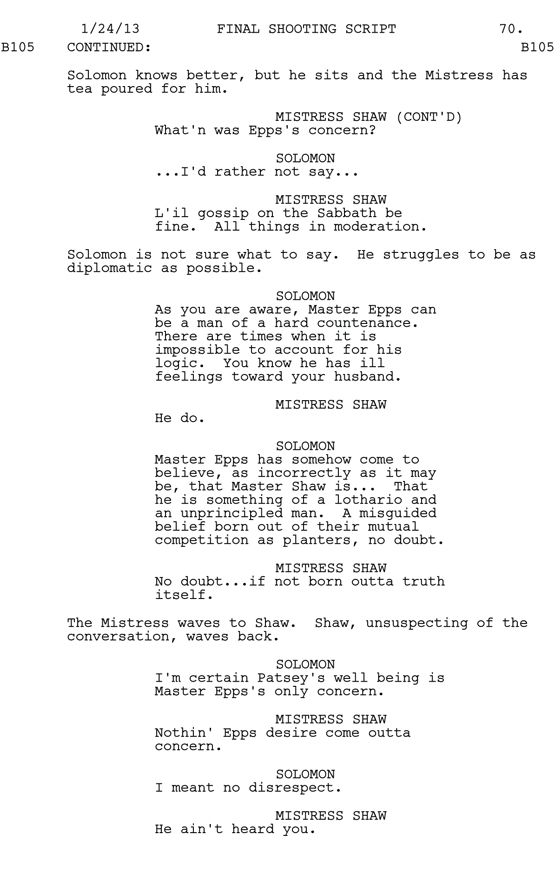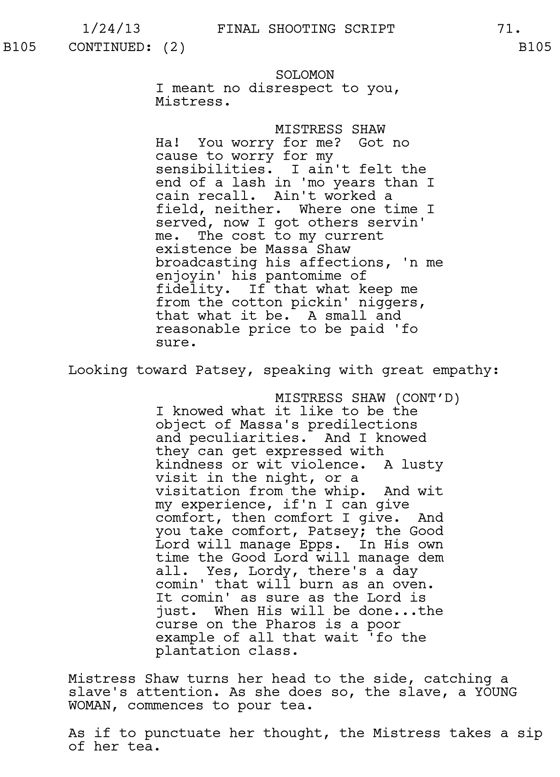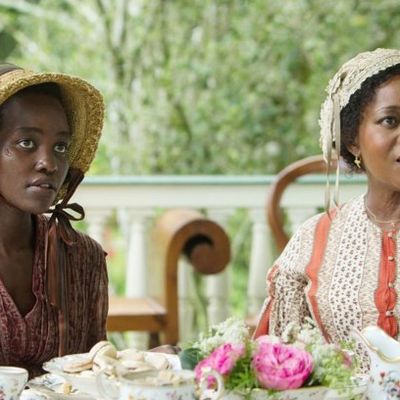
In this series, Vulture has been speaking to the screenwriters behind 2013’s most acclaimed movies about the scenes they found most difficult to crack. What pivotal sequences underwent the biggest transformations on their way from script to screen? Today, John Ridley talks about the jaw-dropping interlude in 12 Years a Slave where Solomon and Patsey encounter Alfre Woodard’s Mistress Shaw. The scene, adapted by Ridley from the memoir by Solomon Northup, is then excerpted below.
The scene with Mistress Shaw was challenging to write on a lot of levels. It’s a place where I had to walk a tightrope, and I could fall nastily. You’re looking at a scene that runs about two and a half pages that has to encompass so many things: plot points, new character, emotional turns. To me, it was kind of like running a very tight one-act play.
Solomon’s writing in the memoir is so elevated and the language that he uses is so evocative and specific that there were many places in the script where I could take his dialogue and just transpose that, but then there were some scenes in the film that were referenced in the memoir that were not really excavated at all. The scene with Mistress Shaw was one of those scenes: It was only about a line or two lines in the memoir, where he talks about having to go fetch Patsey and describes Mistress Shaw. So writing this scene was a complete anthropological piece, and I was very concerned in places that people would see me in it, that they would feel like this was someone in 2013 writing it and not Solomon. This was a place where the dialogue could easily sound imprecise or anachronistic, and I wanted to approach this with an invisible hand.
It’s challenging because it’s lighter than the other scenes, a bit of an oasis. It’s a bit of a WTF moment for the audience: We’re introducing a whole new character late in the film, a stand-alone character whose circumstances are slightly unique to the rest of the story. I thought that was really important to include, because a lot of folks may have been completely unfamiliar with the concept of the woman of color in that era being able to elevate herself to a degree, or the notion that a white master may have felt secure enough not just to have a black mistress but one that he could have a relationship with openly on that level. For the film to be at all relevant, it’s got to be informative, and I thought that was an element that would be informative to an audience, as opposed to being merely monotonous with the circumstances and storytelling of Solomon.
Within the scene itself, it goes through several turns emotionally: It starts with Solomon running and having a real sense of urgency, and then there’s a level of surrealness when he arrives at this plantation and sees Patsey and Mistress Shaw having tea. There’s some levity there, but then it ends on a statement of faith and hope for the future, and it’s one of the few places where an individual who is in and of those circumstances can really demonstrate that they believe that there is a better tomorrow, and speak to the power of the spirit for those folks who were most deeply embedded in that system of slavery.
